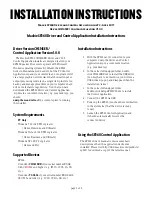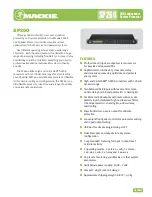
Video Input
Jetson AGX Xavier Series Product
DG-09840-001_v2.5 | 88
10.1.2
CSI C-PHY Mode Design Guidelines
Table 10-7 details the signal routing requirements for CSI C-PHY interface.
Table 10-7.
MIPI CSI C-PHY Interface Signal Routing Requirements
Parameter
Requirement
Units
Notes
Max Data Rate (per trio)
1.7
Gsps
See note 1 and 2
Topology
Point-Point
With RX Common Mode cap to GND
Termination
Fully ODT (on-
die)
50ohms SE to common mode cap
Max Loading (per pin)
2
pF
Single ended
Trace Impedance - Differential / Single Ended
90-100 / 45-50
Ω
±15%
Reference Plane
GND
Max PCB breakout Length/Delay
5 (30)
mm (ps)
Via proximity (Signal via to GND return via)
< 2
mm
Intra Trio Trace spacing - Microstrip / Stripline
2x / 3x
dielectric
Recommendation
Inter Trio Trace spacing - Microstrip / Stripline
2x / 3x
dielectric
Recommend routing with loosely coupled
differential impedance.
Max Trace Length total
Direct from module conn. to device pins
1.7Gsps
1.3Gsps
One conn. between module conn. and device
1.7Gsps
1.3GSps
Two conn. between module conn. and device
1.3Gsps
180
330
100
250
150
mm
Max Intra-Trio Skew (Within Trios)
3
ps
A or B pin to C pin skew.
Max Inter-Trio Skew (between Trios)
55
ps
Routing Layer Restrictions
A trio must route completely on the same layer. This means that both Trio0 and
Trio1 would need to route on the same layer due to DPHY Compatibility (e.g.
D0P/D0N must route on the same layer as CLKP/CLKN and thus so must
D1P/D1N)
Noise Coupling Avoidance
Keep critical traces away from other signal traces or unrelated power traces/areas
or power supply components
Notes:
1.
Bit rate in bps is 2.286 * Gsps.
2.
Maximum data rate may be limited by use case / memory bandwidth.
Table 10-8.
MIPI CSI Signal Connections
Module Pin Name
Type
Termination Description
CSI[7:0]_CLK+/–
DIFF IN
See note
CSI Differential Clocks: Connect to clock pins of camera. See the CSI
configurations tables for details
CSI[7:0]_D[1:0]+/–
DIFF IN
See note
CSI Differential Data Lanes: Connect to data pins of camera. See the
CSI configurations tables for details
Note:
Depending on the mechanical design of the platform and camera modules, ESD protection may be necessary. In addition,
EMI control may be needed. Both are shown in the Camera Connection Example diagram. Any EMI/ESD solution must be
compatible with the frequency required by the design.














































